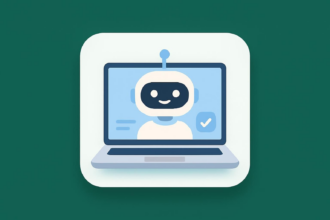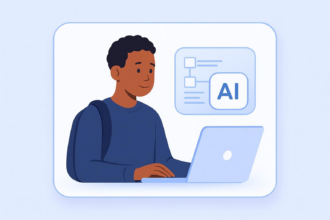Online education existed long before COVID-19, but the pandemic forced everyone to quickly adopt virtual classrooms — and the technology has only improved since then. Because virtual classrooms deliver many benefits, they’ve become a more mainstream, established part of learning environments. Educators now have a myriad of virtual classroom platforms and software solutions to choose from.
The background on virtual classrooms
A virtual classroom is a collaborative remote learning environment in which students and teachers use online platforms to access course materials, review content, engage with others in the classroom, and upload assignments.
While there may be pre-recorded material that students review asynchronously outside the classroom setting, a virtual classroom allows live interaction between students and teachers in real time, tapping into the benefits of face-to-face interaction.
The benefits of virtual classrooms
The pandemic may have sped up the adoption of online learning environments — and virtual classrooms in particular — but their numerous advantages mean they’re here to stay. Here are just a few of the benefits of virtual classrooms:
Flexible learning environment
Virtual classrooms offer a more comfortable, accommodating learning environment for students with disabilities and others who don’t fit into a traditional, structured school setting. And because course materials and interactive features include videos, webinars, screen sharing, live quizzes, simulations, chat rooms, breakout rooms, and more, virtual classrooms accommodate different learning styles and methods of participation.
More convenient access to course material
While virtual classrooms require some in-person participation, students also have the flexibility to review class presentations on their own time — and as often as necessary to fully understand the course material — which leads to more effective learning and retention.
Increased participation and engagement
Virtual classrooms allow those who are shy or introverted to feel more comfortable with fully participating than they would in an in-person environment. And because virtual classrooms typically have built-in engagement tools that collect data, instructors can review engagement patterns to improve participation in lessons. Virtual classrooms also make it easier to carry on conversations after class through asynchronous discussions.
Personalized learning
Students are able to engage with teachers and peers by submitting questions and comments online. Plus, as mentioned above, virtual classroom analytics give teachers feedback on each student. That means teachers can tailor course material and lessons to the specific needs of individual students.
Tracking and analytics
The tracking and analytics capabilities of virtual classrooms give teachers access to class attendance, student engagement, test scores, and other student activity in one easy-to-access platform. This data helps teachers identify areas for improvement and craft lessons and other course materials to meet each student’s needs.
Improved collaboration
With their digital whiteboards, message boards, virtual meeting capabilities, chats, file sharing, and other interactive features, virtual classrooms allow students to easily collaborate with their peers and share comments, questions, and feedback about assignments.
Instant feedback
Because virtual classroom tests can be scored when students complete them, students don’t have to wait to receive a grade. This relieves them of anxiously wondering for days how they performed, and it gives teachers the ability to provide feedback quickly. It also means teachers don’t have to take student assignments home to grade them, which is a huge win.
Time and cost savings
With virtual classrooms, there’s no travel involved, which saves teachers on travel costs, and students and teachers both benefit from the time savings. And because the learning materials are often built into the virtual classroom environment (and it’s less costly to create digital course materials), there’s also no need to buy costly textbooks.
Tips for choosing a virtual classroom platform
Virtual classroom platforms are plentiful these days. So how do you choose the best software for your needs? Here are a few important features to look for:
- A simple, user-friendly platform that requires minimal software downloads and plug-ins
- Breakout rooms that allow for small group collaborations
- Features that mimic a traditional classroom setting, such as digital whiteboards, chat functionality, and the ability to create quizzes and polls
- Quality video streaming
- Instant messaging
- Ease of sharing materials via video, audio, screen share, and download, as well as the ability for students to upload files
- Security features to prevent unauthorized downloading and sharing of course material and other sensitive data
- The flexibility to make changes to the platform if necessary — for example, if you need to accommodate larger class sizes at some point
Learn more about choosing the ideal virtual classroom platform and compare software solutions here.
Steps for creating a virtual classroom
Now that you know which features to look for in your virtual classroom platform, it’s time to create your virtual learning environment.
Here’s what’s next:
- Research virtual classroom software solutions based on the list of features above as well as any others you need for your particular situation.
- Choose your virtual classroom platform.
- Consider your school’s existing learning management system (LMS) and plan accordingly. Is the software solution you chose supported by/compatible with the school’s LMS?
- Share the new digital learning environment particulars with students and other stakeholders so everyone is on the same page before the first day of implementation.
- Set expectations and rules with students. They’ll likely be familiar with all things online, but they may not be as accustomed to accessing course materials or interacting in a virtual classroom setting. You’ll want to cover topics like cheating and plagiarism and share ways they should conduct themselves on message boards and in other areas of the virtual classroom environment.
- Test, test, test. Review the course materials to be sure everything is accessible and the content is accurate. Confirm all resources are working correctly, such as videos, attachments, downloads, and links.
Learn more here about creating an effective virtual learning environment.
Pro Tip
Jotform Presentation Agents offer an easy way to deliver dynamic presentations in virtual classrooms. Customize them to present your lessons in an engaging, visually appealing way that enhances student comprehension and participation.
More tools and resources to support your virtual classroom
Interested in getting more help? Jotform has you covered.
Check out our free online quiz templates; our selection of education-related table templates to help you stay organized; and our fully customizable online education form templates.
We also offer drag-and-drop form-building functionality; form integrations to take your online forms to the next level; and high-level security features, including 256-bit SSL, encryption, spam protection, and more.
And with Jotform Apps, you can even create your own education app without any coding to download onto any smartphone, tablet, or computer. Or you can use our mobile quiz app template and customize it.
Because Jotform loves educators, we also have special pricing plans just for you, in addition to our numerous free resources. Get started with our data collection tool today and receive a 50 percent educational discount for any paid plan. Our Bronze Plan is just $19.50 per month and includes 25 forms and 1,000 monthly submissions; our Silver Plan is $24.50 per month and includes 50 forms and 2,500 monthly submissions; and our Gold Plan is $64.50 per month and includes 100 forms and 10,000 monthly submissions.
We also offer a 30 percent discount to educational institutions on Jotform Enterprise. Jotform Enterprise is simple and customizable, allowing you to create beautiful, customized forms and securely store response data online.
While virtual classrooms might not make an educator’s job “easy,” they can be a powerful tool in today’s new learning environment. And with all the resources above at your disposal, you can provide top-notch, interactive experiences that keep your students engaged — and learning.
Photo by Julia M Cameron







































































































Send Comment: